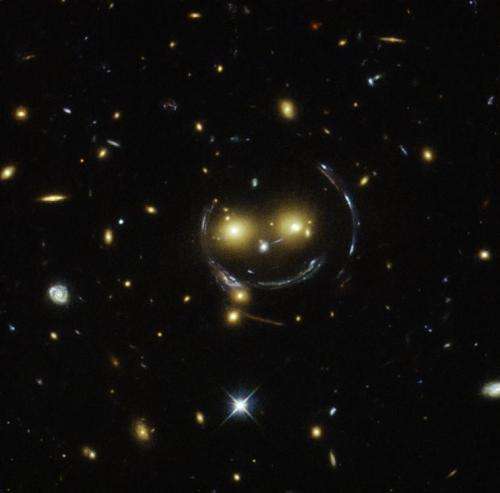Image: Smile, and the universe smiles with you

An upbeat-looking galaxy cluster appears to smile at us in a newly released image from the NASA/ESA Hubble Space Telescope. The cluster - designated as SDSS J1038+4849 - appears to have two eyes and a nose as part of a happy face.
Those eyes are actually very bright galaxies, and the smile lines are, in reality, arcs caused by an effect known as strong gravitational lensing.
Galaxy clusters are the most massive structures in the universe. Their gravitational pull is so strong, they warp the surrounding spacetime and act as cosmic lenses that can magnify, distort and bend light. The phenomenon can be explained by Einstein's theory of general relativity.
In this special case of gravitational lensing, an "Einstein Ring" is produced from this bending of light, a result of the exact and symmetrical alignment of the source, lens and observer. That's why we see the ring-like structure.
Hubble has provided astronomers with tools to study these massive galaxies and model their lensing effects. Because of this, scientists can peer further into the early universe than ever before.
Provided by NASA





















